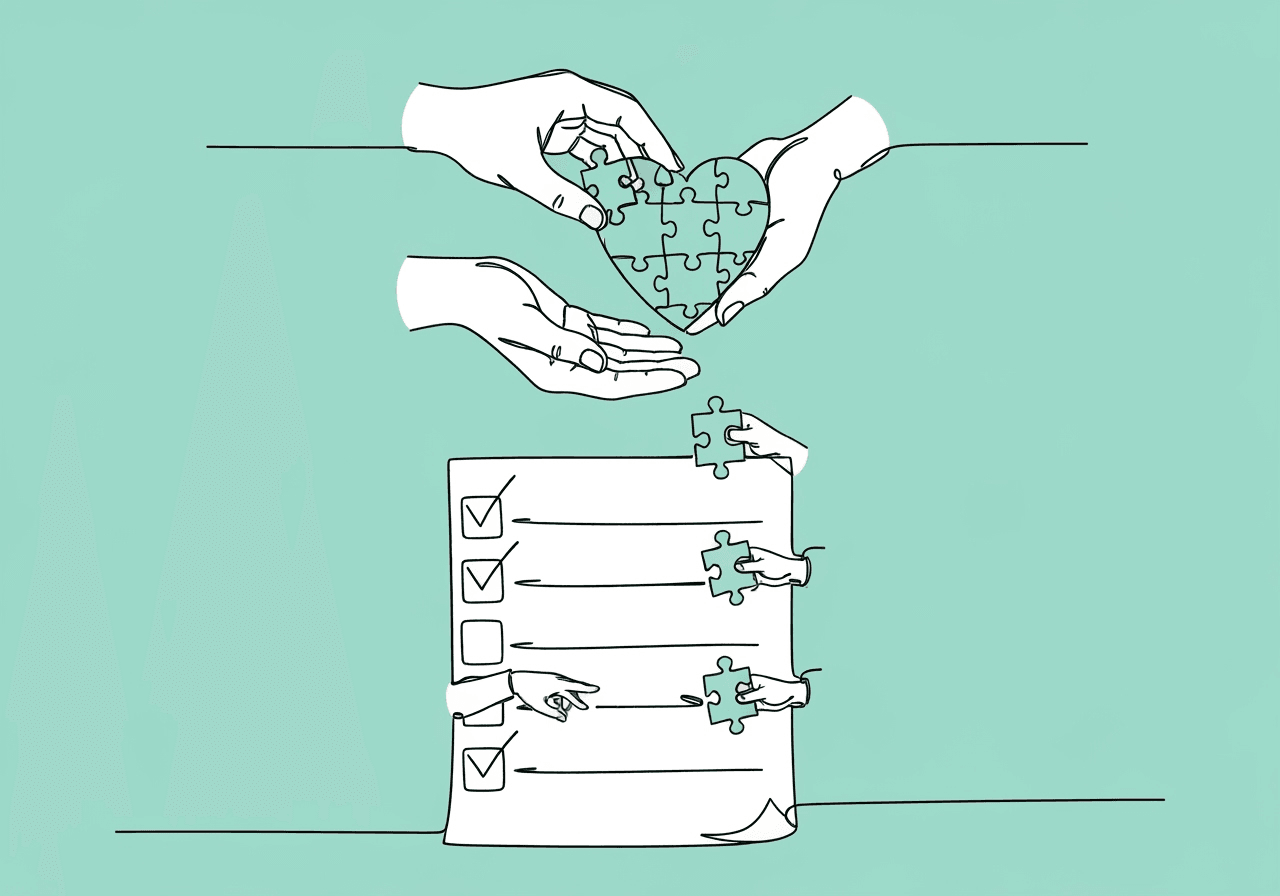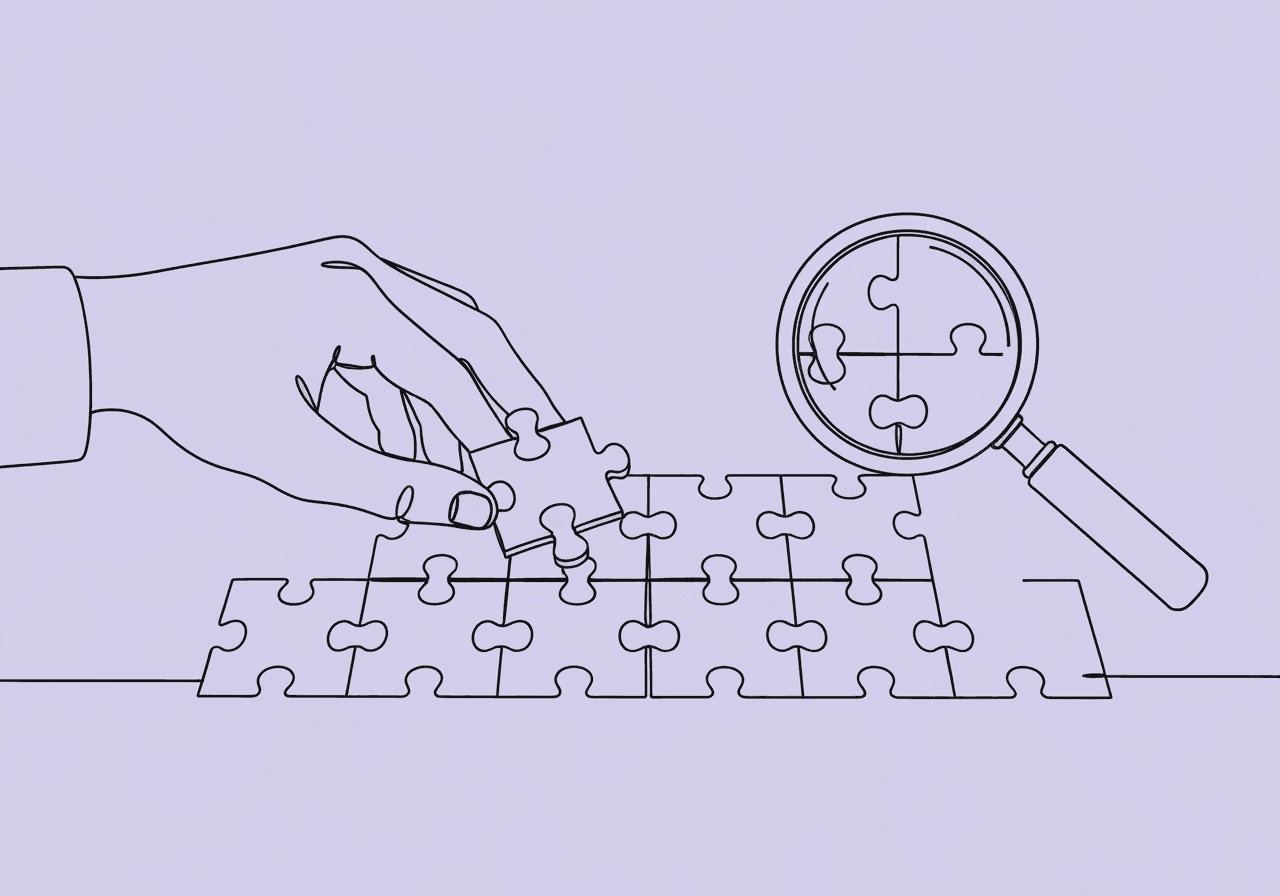CPT 97155 vs 97156: BCBA Documentation Guide

BCBAs dealing with ABA billing often run into issues distinguishing CPT codes like 97155 and 97156. This can lead to claim denials and audits. Proper CPT 97155 vs 97156 documentation requires a nuanced understanding, as these codes serve distinct purposes in adaptive behavior treatment. Mastering these differences ensures services are reimbursable, ethical, and meet medical necessity criteria.
This article provides a clear rationale for documentation practices, drawing from established guidelines to support your clinical decisions. You'll gain actionable insights to enhance your billing accuracy and protocol modification documentation. By the end, you'll be equipped to justify services effectively while minimizing risks.
Understanding CPT Codes 97155 and 97156
CPT codes 97155 and 97156 are for adaptive behavior services in ABA therapy. The American Medical Association established these codes to support targeted interventions for individuals with autism spectrum disorder or related conditions. BCBAs bill for these qualified health professional-led services in 15-minute increments.
Code 97155 covers adaptive behavior treatment with protocol modification. A physician or other qualified professional, like a BCBA, administers this service directly. In contrast, 97156 addresses family adaptive behavior treatment guidance, focusing on face-to-face interactions with caregivers. Both require precise documentation to demonstrate compliance with payer requirements.
What Are the Core Activities for CPT 97155 vs 97156?
CPT 97155 defines adaptive behavior treatment with protocol modification. The BCBA works one-on-one with the client to adjust interventions in real time. Target activities include assessing client responses and implementing immediate changes to the behavior intervention plan. This code applies when the BCBA directly engages the client to address needs that technicians cannot modify independently. According to the ABA Coding Coalition, this service emphasizes the professional's role in dynamic adjustments.
CPT 97156, meanwhile, involves family adaptive behavior treatment guidance. The BCBA delivers this face-to-face to guardians or caregivers, with or without the client present. Target activities center on teaching techniques for daily routines, like behavior management strategies or data collection methods. As outlined by the ABA Coding Coalition, this code requires evidence of ongoing caregiver consultation to ensure consistency and support treatment generalization at home.
These definitions highlight a key difference in billing approaches: 97155 targets client-centered modifications, while 97156 fosters family involvement.
Comparing CPT 97155 vs 97156 Documentation Rationale
The main reason for CPT 97155 documentation is to justify protocol modifications that respond to a client's immediate needs. BCBAs must show how real-time data informs changes, proving the service's necessity. This focus on clinical adaptability differentiates it from routine implementation. The documentation should emphasize the BCBA's expertise in assessing and altering plans.
Conversely, CPT 97156 documentation rationalizes caregiver training as essential for extending treatment. Here, the clinical focus is on equipping families with tools to reinforce interventions outside of sessions. BCBAs document how training aligns with the client's plan, emphasizing caregiver skill-building.
| Feature | CPT 97155 (Protocol Modification) | CPT 97156 (Caregiver Guidance) |
|---|---|---|
| Primary Focus | Direct, real-time adjustments to the client's treatment plan. | Training caregivers to implement ABA strategies. |
| Participants | BCBA and the client. | BCBA and caregivers (client may or may not be present). |
| Goal | Optimize client progress by modifying protocols. | Empower caregivers to support generalization at home. |
| Documentation Justifies | The medical necessity of direct BCBA intervention. | The need for family training to ensure treatment consistency. |
This comparison helps BCBAs avoid vague notes that could trigger audits. According to Nebraska Total Care's policy, both require session-specific details but diverge in scope.
Key Documentation Elements for CPT 97155
Effective CPT 97155 documentation begins with session identifiers like date, start and end times, and client presence. BCBAs must detail RBT fidelity checks, reviewing technician implementation data to identify discrepancies. This element ensures modifications address any gaps in protocol delivery. Next, you should outline specific program changes, including the before-and-after protocols.
Client response is the crux, capturing behavioral data like acquisition rates or problem behavior incidents after the modification. Guidance from the ABA Coding Coalition stresses including measurable outcomes to track efficacy. To streamline this, consider using a template like our Master CPT 97155 Docs template.
Bullet key elements for clarity:
- A summary of RBT fidelity (e.g., percentage of accurate implementation).
- Specific protocol changes with clear clinical justification.
- Client response metrics, such as trials to criterion.
- A clear link to the client's overall treatment goals.
Key Documentation Elements for CPT 97156
CPT 97156 notes start with session basics: date, duration, and participants. BCBAs should specify training topics, such as teaching discrete trial procedures or crisis intervention techniques tailored to home settings. Caregiver mastery assessment is vital. This involves documenting pre- and post-training proficiency through methods like role-plays or quizzes to show skill development.
Implementation data ties training to client outcomes, such as caregiver-reported skill use at home. The South Dakota DSS manual requires details on how caregivers incorporate techniques into routines to justify ongoing sessions. Our CPT 97156 Documentation Requirements offers a practical tool.
Key elements include:
- The specific training topics and methods used (e.g., modeling, feedback).
- Indicators of caregiver mastery, like independent execution of a technique.
- Data on home implementation, such as the frequency of technique use.
- How the training aligns with the client's progress.
How to Prove Medical Necessity in CPT 97155 vs 97156 Documentation
Medical necessity for CPT 97155 hinges on evidence that protocol modifications prevent treatment stagnation. BCBAs must document how unmodified plans would hinder goals, using data to show client plateaus or regressions. This rationale, per ABA Coding Coalition guidelines, links services to functional improvements. For example, notes might state: "Client's response to current chaining procedure yielded only 40% independence; modified to backward chaining based on session data."
For 97156, medical necessity arises from caregivers' inability to support interventions independently, which risks poor generalization. Documentation proves training addresses this by detailing skill gaps and post-training application. Payer guidelines often require you to include how guidance extends direct therapy benefits. Both codes require tying elements to the treatment plan. Learn more with our Master ABA Medical Necessity guide.
Concurrent Billing Rules and Ethical Documentation Pitfalls
Concurrent billing of 97155 and 97156 is allowable under specific conditions, as confirmed in payer guidance like Humana Military's FAQ. It requires two distinct qualified professionals: one delivering 97155 directly to the client and the other providing 97156 to caregivers separately. This setup maximizes efficiency, but documentation must clearly delineate roles and locations.
Payer policies, like those from Florida AHCA, prohibit concurrent billing with codes like 97153 if the same provider is involved. Ethical pitfalls include overbilling or vague documentation. BCBAs must adhere to the BACB Ethics Code by ensuring accuracy.
Common errors include:
- Failing to note caregiver absence during a 97155 session.
- Blurring the lines between the two codes in progress notes.
- Omitting the clinical rationale, which can risk audit flags.
For related direct services, review our CPT Code 97153 guide.
Frequently Asked Questions
What are the key differences in CPT 97155 vs 97156 documentation requirements?
CPT 97155 requires details on direct client interactions, protocol changes, and real-time responses. In contrast, CPT 97156 focuses on caregiver training topics, mastery assessments, and home implementation. The American Medical Association's behavioral health coding guide provides official descriptions for these distinctions.
How do I document medical necessity for CPT code 97155?
Link modifications to client data showing a clear need, such as progress stalls, and detail your rationale for the changes. According to Nebraska Total Care policy (2024), you must include session outcomes to justify BCBA involvement over routine services.
What specific scenarios require the use of CPT code 97156?
Use 97156 for face-to-face caregiver sessions where you teach ABA techniques for daily use. The South Dakota DSS manual specifies scenarios where family training is necessary to ensure treatment consistency, especially after direct sessions.
Are there any common pitfalls when billing CPT codes 97155 and 97156?
Common pitfalls include inadequate specificity on modifications or training, which can lead to denials. The ABA Coding Coalition also warns against concurrent billing errors with the same provider; always separate roles and document distinct impacts.
Can 97155 and 97156 be billed concurrently with other ABA codes like 97153?
Yes, but only with different providers and non-overlapping roles, per payer policies. Avoid billing 97155/97156 concurrently with 97153 if the BCBA supervises the same session, as noted in Florida AHCA FAQs.
How does concurrent billing impact the reimbursement process for 97155 and 97156?
It can boost efficiency but demands clear documentation of separate services to prevent bundling denials. Payers review for medical necessity in tandem, and approvals may increase if roles are distinctly justified, as noted in ABA Coding Coalition guidelines.
This comparison of CPT 97155 vs 97156 documentation equips BCBAs to navigate billing complexities with confidence. By focusing on protocol modifications for 97155 and caregiver guidance for 97156, you strengthen medical necessity claims. Evidence from authoritative sources underscores the need for precise, outcome-linked notes.
Practically, this means fewer audits and smoother reimbursements. This allows you to focus more on client impact. For BCBAs, integrating these practices into daily workflows enhances treatment fidelity.
Here's what you can do next:
- Audit recent notes against the key elements outlined here.
- Use templates from resources like Praxis Notes for consistency.
- Consult payer policies quarterly to stay compliant.
Embrace these contrasting billing approaches to deliver value-driven ABA care.
Popular in CPT Codes & Billing
- 1
2025 ABA Billing Updates: Essential Guide for RBTs
1,6218 min read - 2
CPT Code 97153: Complete Guide for RBTs
1,0999 min read - 3
CPT Code 97153 ABA: Complete 2025 Billing Guide for RBTs & BCBAs
1,0914 min read - 4
Master ABA CPT Codes 97153-97158: Avoid Costly Audit Findings in 2025
6185 min read - 5
CPT 97156 Documentation Requirements: Note Template + Examples [2025]
4559 min read
Popular in CPT Codes & Billing
- 1
2025 ABA Billing Updates: Essential Guide for RBTs
1,6218 min read - 2
CPT Code 97153: Complete Guide for RBTs
1,0999 min read - 3
CPT Code 97153 ABA: Complete 2025 Billing Guide for RBTs & BCBAs
1,0914 min read - 4
Master ABA CPT Codes 97153-97158: Avoid Costly Audit Findings in 2025
6185 min read - 5
CPT 97156 Documentation Requirements: Note Template + Examples [2025]
4559 min read
Related Resources
Explore more helpful content on similar topics

CPT 97155 vs 97156 Documentation: Key Differences for BCBAs
Unravel CPT 97155 vs 97156 documentation differences for BCBAs. Learn essential breakdowns, side-by-side comparisons, ABA billing compliance tips, and real-world scenarios to master accurate coding and avoid compliance risks.

BCBA CPT 97156 Documentation: 10-Point Checklist
Master BCBA CPT 97156 documentation using our essential 10-point checklist. Boost parent training compliance, perfect 97156 session notes, and safeguard against claim denials by proving medical necessity with caregiver data.

CPT 97155 Documentation Narrative: A BCBA Guide
Master CPT 97155 documentation narratives for BCBA protocol modifications. Get step-by-step guidance on data-driven justifications, billing compliance, and ABA therapy standards to ensure accurate reimbursements.